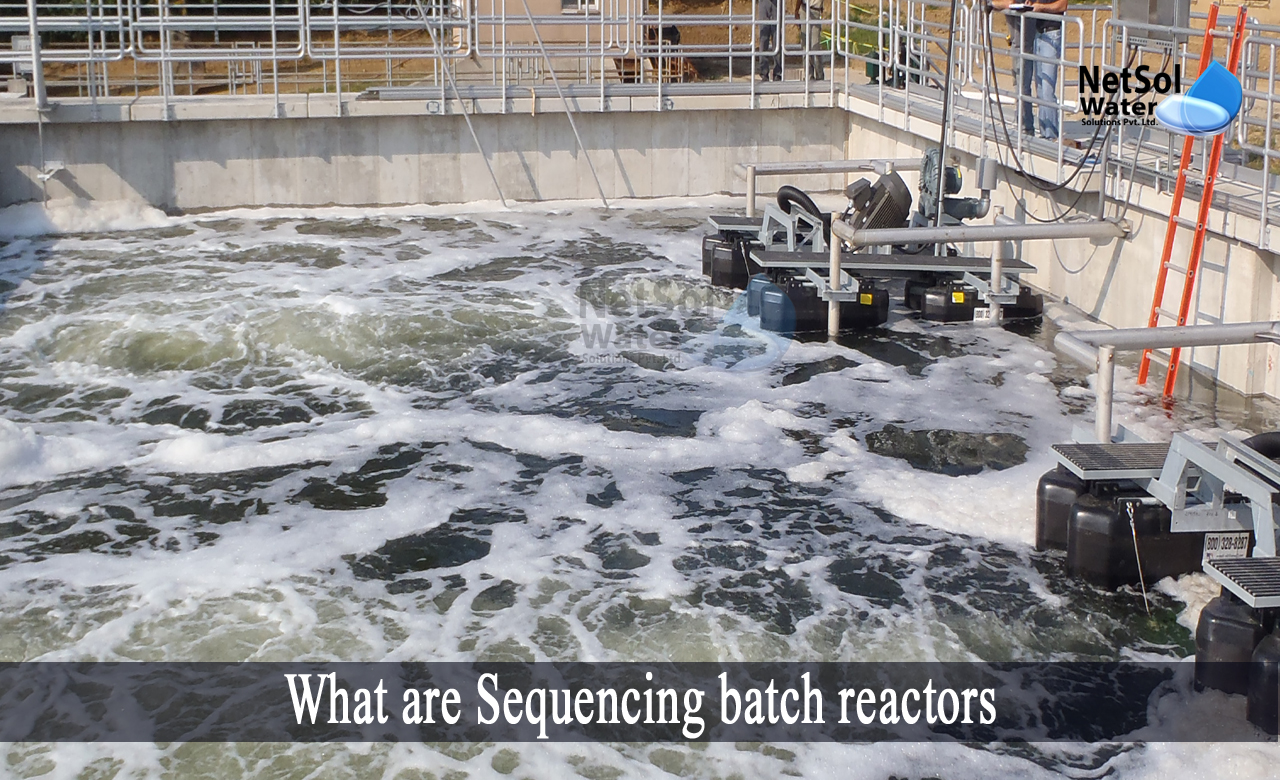What are Sequencing batch reactors?
Sequencing batch reactors (SBR) or sequential batch reactors are industrial wastewater treatment tanks. SBR handles wastewater in batches, such as sewage or wastewater from anaerobic digesters, or mechanical biological treatment plants. Oxygen is bubbled through wastewater, to minimize biochemical oxygen demand (BOD) and chemical oxygen demand (COD), allowing it to be discharged into sewers or used on land. While SBRs come in a variety of forms, the underlying procedure remains the same.
Components ofsequencing batch reactors (SBRs)
The system consists of at least two similarly outfitted tanks, with a shared intake that may be switched between them. The tanks are built using a "flow-through" system, which allows raw wastewater (influent) to enter one end, and cleaned water (effluent) to escape the other.
While one tank is settling and decanting, the other is aerating and filling. The bio-selector is a part of the tank located near the intake. This is made up of a succession of barriers or baffles, which diverts the flow from one side of the tank to the other, or beneath and over successive baffles. This aids in the mixing of the entering influent and the returning activated sludge, kicking off the biological digestion process before the liquor enters the main tank.
Phases of treatment in SBR
Within the treatment process, there are five stages:
· Fill
· React
· Settle
· Decant
· Idle
Working of sequencing batch reactors
Firs?t, the input valve opens and the container is fed, followed by physical mixing but no air injection. This is often referred to as the anoxic stage. In the second step, the combined liquor is aerated using permanent or floating physical pumps, or by air movement through fine bubble diffusers, placed at the tank bottom. There is no aeration or stirring in the third stage, and the settling of suspended particles begins. During the fourth phase, the outlet valve is opened, enabling the "pure" supernatant liquor to exit the tank.
Configuration of the SBR Process
SBRs must have the following components:
· Reactor basin
· Mechanism for removing waste sludge
· Equipment for aeration
· Decanter for effluent
System of process control
The SBR system typically consists of a storage/equalization tank and a single SBR tank, or a minimum of two tanks, to allow the continuous intake of wastewater.
1: Conventional screening and grit removal, as with conventional activated sludge treatment systems, are frequently given as preliminary treatment. Unless the influent suspended particles are considerable, a first sedimentation stage is typically not required with SBR systems.
2: If the SBR is put downstream of existing main settlement tanks, settled sewage can also be treated. Reactors are typically basic round, square, or rectangular tanks made of concrete or steel.
3: Lagoon constructions can also be utilized. Because the tank functions as both an aeration tank and a final clarifier, fewer buildings are required for the treatment plant as a whole, allowing for a more compact site layout.
Multi sequencing batch reactor transformation
When a traditional treatment plant is unable to offer enough treatment, due to higher loading rates, stringent treatment standards, and other factors, the owner may elect to convert their present technique into a multi-SBR facility. Converting to SBR will result in a longer sewage age, which will reduce the demand for SBR sludge management.
Advantages of using SBRs
1: It accomplishes both concurrent (co-current) nitrification and de-nitrification, via aeration intensity modulation.
2: It operates with continually decreased loads and simple cycle modifications.
3: It uses feed-starve selectivity, and aeration intensity to prevent filamentous sludge bulking, while also ensuring endogenous respiratory rate, nitrification, and de-nitrification, and improved biological phosphorus withdrawal.
4: It can endure shock loads caused by organic and hydraulic load fluctuations. The strategy is straightforward to implement and may be adjusted, to account for both short-term diurnal and long-term climatic variations.
5: It eliminates the need for an additional clarifier.
6: It does away with the necessity for separate load equalization. The SBR basin functions as both an equalization basin and a clarifier, with a far lower solids flow than a standard clarifier design.
7: It has the intrinsic ability to remove nutrients without the need for chemicals, by controlling oxygen supply and demand.
8: It optimizes energy via nutrient removal mechanisms. Carbonaceous BOD in feed water used in denitrification, and improved biological phosphorus removal, decreases oxygen rate and energy needs dramatically.
9: Its capital and operational expenses are cheaper.
Manufacturers of Wastewater Treatment Plants in India
Netsol Water, based in Greater Noida, India, is a well-known manufacturer of water and wastewater treatment systems. We are well-known for being the top commercial RO plant manufacturers, industrial RO plant manufacturers, ZLD Plant manufacturer, sewage treatment plant manufacturers, Water Softener Plant Manufacturers, effluent treatment plant manufacturers, and much more. We employ various techniques in our wastewater treatment plants, which include aerobic/anaerobic processes, activated carbon, reverse osmosis, Induced gas flotation, SBR, MBBR, MBR, etc.
Netsol Water is Greater Noida-based leading water & wastewater treatment plant manufacturer. We are industry's most demanding company based on client review and work quality. We are known as best commercial RO plant manufacturers, industrial RO plant manufacturer, sewage treatment plant manufacturer, Water Softener Plant Manufacturers and effluent treatment plant manufacturers. Apart from this 24x7 customer support is our USP. Call on +91-9650608473, or write us at enquiry@netsolwater.com for any support, inquiry or product-purchase related query.



